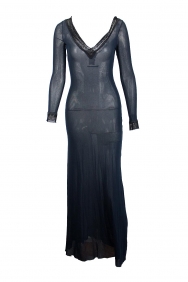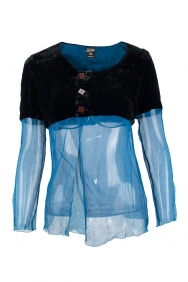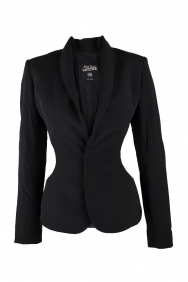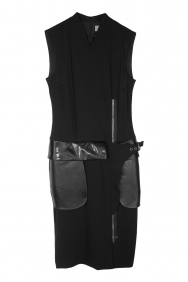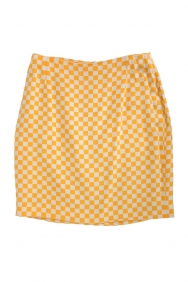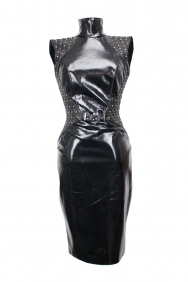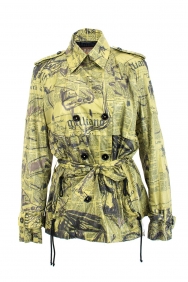Jean Paul Gaultier and Other Greats of the Early 90s
by HULA on Jan 31, 2020
[caption id="attachment_9024" align="alignnone" width="1240"] Jean Paul Gaultier at his Final Fashion Show in Paris, Courtesy of France 24[/caption]
As the great Jean Paul Gaultier retires after decades of iconic service, we look back onto the golden era of Gaultier - the late 1980s and 1990s. This was the time of sex, gender and experimentation. Designers like the late Gianni Versace, John Galliano and Vivienne Westwood all encapsulated this period through their iconic (and sometimes controversial) statement pieces. We look back at this time for inspiration as due to its high pop-culture relevance and garments that are still relevant today.
Jean Paul Gaultier
Born in 1952, Gaultier started his career at only age 18 at the legendary house of Pierre Cardin. It was not until 1982 when he founded his own house and launched his namesake brand. Branded as "l'enfant terrible," Gaultier was considered controversial as his designs went against the status quo of the 80s. He continued his successful label as well as head designer of Hermès in 2003 (he left the luxury house in 2011).
[caption id="attachment_9013" align="aligncenter" width="770"]
Jean Paul Gaultier at his Final Fashion Show in Paris, Courtesy of France 24[/caption]
As the great Jean Paul Gaultier retires after decades of iconic service, we look back onto the golden era of Gaultier - the late 1980s and 1990s. This was the time of sex, gender and experimentation. Designers like the late Gianni Versace, John Galliano and Vivienne Westwood all encapsulated this period through their iconic (and sometimes controversial) statement pieces. We look back at this time for inspiration as due to its high pop-culture relevance and garments that are still relevant today.
Jean Paul Gaultier
Born in 1952, Gaultier started his career at only age 18 at the legendary house of Pierre Cardin. It was not until 1982 when he founded his own house and launched his namesake brand. Branded as "l'enfant terrible," Gaultier was considered controversial as his designs went against the status quo of the 80s. He continued his successful label as well as head designer of Hermès in 2003 (he left the luxury house in 2011).
[caption id="attachment_9013" align="aligncenter" width="770"] Jean Paul Gaultier with Actors from 'The Fifth Element' in his Designs[/caption]
It was not until 1990 that he gained global notoriety through designing for Madonna's 'Blond Ambition' tour (he designed pieces for her 2006 'Confessions' tour as well). Other notable appearances of his pieces were in films such as 'The Fifth Element', 'The Cook, the Thief, His Wife & Her Lover', and 'The City of Lost Children'.
[caption id="attachment_9012" align="aligncenter" width="747"]
Jean Paul Gaultier with Actors from 'The Fifth Element' in his Designs[/caption]
It was not until 1990 that he gained global notoriety through designing for Madonna's 'Blond Ambition' tour (he designed pieces for her 2006 'Confessions' tour as well). Other notable appearances of his pieces were in films such as 'The Fifth Element', 'The Cook, the Thief, His Wife & Her Lover', and 'The City of Lost Children'.
[caption id="attachment_9012" align="aligncenter" width="747"] La Marinière Womenswear, Courtesy of JeanPaulGaulter.com[/caption]
Iconic looks of Gaultier are plentiful. The initial iconic concept from him is from 1983, when he was inspired by his childhood wardrobe and adopted a sailor-esque aesthetic for his menswear collection. This was coined La Marinière, and bled into his womenswear collections as well through the classic navy and white striped tops. Another garment was the man skirt that challenged gender norms in the 1980s. This debuted in 1985, and was called the La Jupe por Homme. Gaultier was inspired by making his male models more feminine and the lengths he could go with gender-bending.
[caption id="attachment_9011" align="aligncenter" width="652"]
La Marinière Womenswear, Courtesy of JeanPaulGaulter.com[/caption]
Iconic looks of Gaultier are plentiful. The initial iconic concept from him is from 1983, when he was inspired by his childhood wardrobe and adopted a sailor-esque aesthetic for his menswear collection. This was coined La Marinière, and bled into his womenswear collections as well through the classic navy and white striped tops. Another garment was the man skirt that challenged gender norms in the 1980s. This debuted in 1985, and was called the La Jupe por Homme. Gaultier was inspired by making his male models more feminine and the lengths he could go with gender-bending.
[caption id="attachment_9011" align="aligncenter" width="652"] Man Skirt, Courtesy of JeanPaulGaultier.com[/caption]
Most people associate the cone bra with Gaultier. He was designing versions of it way before Madonna first wore it on her 'Blond Ambition' tour. He designed a cone corset in 1983 and utilised this hyper feminine shape throughout the 80s. This again was playing with over-sexuality and elements of underwear as outer-wear, an aesthetic still popular today. This look was emblematic of the over-all woman that inspired Gaultier: independent, sexual and powerful. She was rebellious and not afraid to take risks.
[caption id="attachment_9010" align="aligncenter" width="614"]
Man Skirt, Courtesy of JeanPaulGaultier.com[/caption]
Most people associate the cone bra with Gaultier. He was designing versions of it way before Madonna first wore it on her 'Blond Ambition' tour. He designed a cone corset in 1983 and utilised this hyper feminine shape throughout the 80s. This again was playing with over-sexuality and elements of underwear as outer-wear, an aesthetic still popular today. This look was emblematic of the over-all woman that inspired Gaultier: independent, sexual and powerful. She was rebellious and not afraid to take risks.
[caption id="attachment_9010" align="aligncenter" width="614"] Madonna 'Blond Ambition' Tour, Courtesy of Marie Claire[/caption]
Gianni Versace
The late Gianni Versace was also inspired by sex, power and being unapologetically over-the-top. Born in 1946, Versace started his Italian line in 1978. He dressed a large variety of celebrities: from Princess Diana to essentially all of the major super models of the 1990s. His most popular designs typically sported gold, Medusa heads or bondage.
[caption id="attachment_9015" align="aligncenter" width="961"]
Madonna 'Blond Ambition' Tour, Courtesy of Marie Claire[/caption]
Gianni Versace
The late Gianni Versace was also inspired by sex, power and being unapologetically over-the-top. Born in 1946, Versace started his Italian line in 1978. He dressed a large variety of celebrities: from Princess Diana to essentially all of the major super models of the 1990s. His most popular designs typically sported gold, Medusa heads or bondage.
[caption id="attachment_9015" align="aligncenter" width="961"] Princess Diana Wearing Gianni Versace, Courtesy of CR Fashion Book[/caption]
Princess Diana was close friends with Versace and would often sport his more modest designs. One of the most iconic looks she wore of his was the monochromatic purple look. On the more ostentatious end of the Versace design spectrum is when Elizabeth Hurley wore his iconic safety pin gown on the red carpet for the film 'Four Weddings and a Funeral'.
[caption id="attachment_9016" align="aligncenter" width="980"]
Princess Diana Wearing Gianni Versace, Courtesy of CR Fashion Book[/caption]
Princess Diana was close friends with Versace and would often sport his more modest designs. One of the most iconic looks she wore of his was the monochromatic purple look. On the more ostentatious end of the Versace design spectrum is when Elizabeth Hurley wore his iconic safety pin gown on the red carpet for the film 'Four Weddings and a Funeral'.
[caption id="attachment_9016" align="aligncenter" width="980"] Elizabeth Hurley in Gianni Versace Safety Pin Gown, Courtesy of CR Fashion Book[/caption]
Helena Christensen wore a staple of Versace clothing: bondage. The bondage inspired dress on the 1992 runway became instantly iconic as it pushed the envelope of what could be considered high-fashion. Versace dressed all the super models of the era (Linda Evangelista, Cindy Crawford, Naomi Campbell and Christy Turlington), on and off the runway.
[caption id="attachment_9017" align="aligncenter" width="980"]
Elizabeth Hurley in Gianni Versace Safety Pin Gown, Courtesy of CR Fashion Book[/caption]
Helena Christensen wore a staple of Versace clothing: bondage. The bondage inspired dress on the 1992 runway became instantly iconic as it pushed the envelope of what could be considered high-fashion. Versace dressed all the super models of the era (Linda Evangelista, Cindy Crawford, Naomi Campbell and Christy Turlington), on and off the runway.
[caption id="attachment_9017" align="aligncenter" width="980"] Helena Christensen in Gianni Versace Bondage Inspired Look, Courtesy of CR Fashion Book[/caption]
Vivienne Westwood
Born in 1941, Westwood started her label in 1971. Also very inspired by sexuality, Westwood's first store was a fetish-wear shop, titled 'Sex'. She even dressed the Sex Pistols in 1976 as an ode to her London punk-rock aesthetic. Her first collection, titles 'Pirate' debuted in 1981, and kicked off her career of bringing the 'New Romantic' style to the rest of the world. Controversy followed Westwood throughout her career due to her experimentation with gender and sexuality (she even had her male models wear fake breasts in 2003).
[caption id="attachment_9059" align="aligncenter" width="800"]
Helena Christensen in Gianni Versace Bondage Inspired Look, Courtesy of CR Fashion Book[/caption]
Vivienne Westwood
Born in 1941, Westwood started her label in 1971. Also very inspired by sexuality, Westwood's first store was a fetish-wear shop, titled 'Sex'. She even dressed the Sex Pistols in 1976 as an ode to her London punk-rock aesthetic. Her first collection, titles 'Pirate' debuted in 1981, and kicked off her career of bringing the 'New Romantic' style to the rest of the world. Controversy followed Westwood throughout her career due to her experimentation with gender and sexuality (she even had her male models wear fake breasts in 2003).
[caption id="attachment_9059" align="aligncenter" width="800"] Andreas Krothaler for Vivienne Westwood Fall 1995, Ready-To-Wear Collection.[/caption]
The late 1980s and early 1990s were a time for play for Westwood. She would often give models props, and emulate an air of not taking the industry too seriously. This even played out when Naomi Campbell iconically fell during a 1993 Westwood runway show due to the enormous platform shoes, and burst into a large smile. The lightness that Campbell emitted at that moment represented the brand perfectly. Westwood was all about satire.
[caption id="attachment_9008" align="aligncenter" width="980"]
Andreas Krothaler for Vivienne Westwood Fall 1995, Ready-To-Wear Collection.[/caption]
The late 1980s and early 1990s were a time for play for Westwood. She would often give models props, and emulate an air of not taking the industry too seriously. This even played out when Naomi Campbell iconically fell during a 1993 Westwood runway show due to the enormous platform shoes, and burst into a large smile. The lightness that Campbell emitted at that moment represented the brand perfectly. Westwood was all about satire.
[caption id="attachment_9008" align="aligncenter" width="980"] Naomi Campbell Falling During 1993 Runway Show, Courtesy of CR Fashion Book[/caption]
Hyper-femininity was a huge component of Westwood designs. This was best displayed in her Spring / Summer 1995 show where Kate Moss was wearing nothing but a barely-there skirt and eating an ice-cream bar. She also has corsets as outer-wear in 1994 - a call-back to her old fetish store days. Also in 1994, Westwood designed a tartan suit with extreme padding in the seat of the skirt. This was done to exaggerate the female form.
[caption id="attachment_9009" align="aligncenter" width="980"]
Naomi Campbell Falling During 1993 Runway Show, Courtesy of CR Fashion Book[/caption]
Hyper-femininity was a huge component of Westwood designs. This was best displayed in her Spring / Summer 1995 show where Kate Moss was wearing nothing but a barely-there skirt and eating an ice-cream bar. She also has corsets as outer-wear in 1994 - a call-back to her old fetish store days. Also in 1994, Westwood designed a tartan suit with extreme padding in the seat of the skirt. This was done to exaggerate the female form.
[caption id="attachment_9009" align="aligncenter" width="980"] 1994 Runway Look Inspired by 17th Century Padding Techniques, Courtesy of CR Fashion Book[/caption]
John Galliano
Yet another iconic, yet controversial, designer - John Galliano also questioned modern culture and created designs to challenge the public ideals of beauty. Born in 1960, Galliano established his own label after graduating school in 1984. He quickly became the 'Boy Wonder' of fashion and made his fashion week debut in 1991. Galliano also designed for Givenchy (1995-1996) and Christian Dior (1996-2011).
[caption id="attachment_9022" align="aligncenter" width="874"]
1994 Runway Look Inspired by 17th Century Padding Techniques, Courtesy of CR Fashion Book[/caption]
John Galliano
Yet another iconic, yet controversial, designer - John Galliano also questioned modern culture and created designs to challenge the public ideals of beauty. Born in 1960, Galliano established his own label after graduating school in 1984. He quickly became the 'Boy Wonder' of fashion and made his fashion week debut in 1991. Galliano also designed for Givenchy (1995-1996) and Christian Dior (1996-2011).
[caption id="attachment_9022" align="aligncenter" width="874"] John Galliano 1994 Collection Inspired by a Russian Princess, Courtesy of Vanity Fair[/caption]
While many of his most iconic moments were his Dior designs, Galliano also created his own stamp on the fashion world through his namesake brand. His good friends Naomi Campbell and Kate Moss were often found in his pieces (Moss commissioned him to design her wedding dress in 2011). His showmanship, love for history and eye for tailoring lead to jaw-dropping runway shows and unforgettable designs.
[caption id="attachment_9021" align="aligncenter" width="916"]
John Galliano 1994 Collection Inspired by a Russian Princess, Courtesy of Vanity Fair[/caption]
While many of his most iconic moments were his Dior designs, Galliano also created his own stamp on the fashion world through his namesake brand. His good friends Naomi Campbell and Kate Moss were often found in his pieces (Moss commissioned him to design her wedding dress in 2011). His showmanship, love for history and eye for tailoring lead to jaw-dropping runway shows and unforgettable designs.
[caption id="attachment_9021" align="aligncenter" width="916"] John Galliano with Naomi Campbell and Kate Moss, Courtesy of Vanity Fair[/caption]
Galliano's 1995 'Pin Up' collection was iconically worn by Linda Evangelista. It showed his appreciation of the female form and for exaggeration of classic silhouettes. His pieces typically were call-backs to historical periods and bold characters within a narrative of his own creation.
[caption id="attachment_9020" align="aligncenter" width="634"]
John Galliano with Naomi Campbell and Kate Moss, Courtesy of Vanity Fair[/caption]
Galliano's 1995 'Pin Up' collection was iconically worn by Linda Evangelista. It showed his appreciation of the female form and for exaggeration of classic silhouettes. His pieces typically were call-backs to historical periods and bold characters within a narrative of his own creation.
[caption id="attachment_9020" align="aligncenter" width="634"] Linda Evangelista in 1995 'Pin Up' Collection, Courtesy of Flickr[/caption]
HULA's Pieces by the Greats:
Linda Evangelista in 1995 'Pin Up' Collection, Courtesy of Flickr[/caption]
HULA's Pieces by the Greats:
Sources:
Vanity Fair, Vogue, CR Fashion Book, Vogue, Jean Paul Gaultier, CR Fashion Book,
 Jean Paul Gaultier at his Final Fashion Show in Paris, Courtesy of France 24[/caption]
As the great Jean Paul Gaultier retires after decades of iconic service, we look back onto the golden era of Gaultier - the late 1980s and 1990s. This was the time of sex, gender and experimentation. Designers like the late Gianni Versace, John Galliano and Vivienne Westwood all encapsulated this period through their iconic (and sometimes controversial) statement pieces. We look back at this time for inspiration as due to its high pop-culture relevance and garments that are still relevant today.
Jean Paul Gaultier
Born in 1952, Gaultier started his career at only age 18 at the legendary house of Pierre Cardin. It was not until 1982 when he founded his own house and launched his namesake brand. Branded as "l'enfant terrible," Gaultier was considered controversial as his designs went against the status quo of the 80s. He continued his successful label as well as head designer of Hermès in 2003 (he left the luxury house in 2011).
[caption id="attachment_9013" align="aligncenter" width="770"]
Jean Paul Gaultier at his Final Fashion Show in Paris, Courtesy of France 24[/caption]
As the great Jean Paul Gaultier retires after decades of iconic service, we look back onto the golden era of Gaultier - the late 1980s and 1990s. This was the time of sex, gender and experimentation. Designers like the late Gianni Versace, John Galliano and Vivienne Westwood all encapsulated this period through their iconic (and sometimes controversial) statement pieces. We look back at this time for inspiration as due to its high pop-culture relevance and garments that are still relevant today.
Jean Paul Gaultier
Born in 1952, Gaultier started his career at only age 18 at the legendary house of Pierre Cardin. It was not until 1982 when he founded his own house and launched his namesake brand. Branded as "l'enfant terrible," Gaultier was considered controversial as his designs went against the status quo of the 80s. He continued his successful label as well as head designer of Hermès in 2003 (he left the luxury house in 2011).
[caption id="attachment_9013" align="aligncenter" width="770"] Jean Paul Gaultier with Actors from 'The Fifth Element' in his Designs[/caption]
It was not until 1990 that he gained global notoriety through designing for Madonna's 'Blond Ambition' tour (he designed pieces for her 2006 'Confessions' tour as well). Other notable appearances of his pieces were in films such as 'The Fifth Element', 'The Cook, the Thief, His Wife & Her Lover', and 'The City of Lost Children'.
[caption id="attachment_9012" align="aligncenter" width="747"]
Jean Paul Gaultier with Actors from 'The Fifth Element' in his Designs[/caption]
It was not until 1990 that he gained global notoriety through designing for Madonna's 'Blond Ambition' tour (he designed pieces for her 2006 'Confessions' tour as well). Other notable appearances of his pieces were in films such as 'The Fifth Element', 'The Cook, the Thief, His Wife & Her Lover', and 'The City of Lost Children'.
[caption id="attachment_9012" align="aligncenter" width="747"] La Marinière Womenswear, Courtesy of JeanPaulGaulter.com[/caption]
Iconic looks of Gaultier are plentiful. The initial iconic concept from him is from 1983, when he was inspired by his childhood wardrobe and adopted a sailor-esque aesthetic for his menswear collection. This was coined La Marinière, and bled into his womenswear collections as well through the classic navy and white striped tops. Another garment was the man skirt that challenged gender norms in the 1980s. This debuted in 1985, and was called the La Jupe por Homme. Gaultier was inspired by making his male models more feminine and the lengths he could go with gender-bending.
[caption id="attachment_9011" align="aligncenter" width="652"]
La Marinière Womenswear, Courtesy of JeanPaulGaulter.com[/caption]
Iconic looks of Gaultier are plentiful. The initial iconic concept from him is from 1983, when he was inspired by his childhood wardrobe and adopted a sailor-esque aesthetic for his menswear collection. This was coined La Marinière, and bled into his womenswear collections as well through the classic navy and white striped tops. Another garment was the man skirt that challenged gender norms in the 1980s. This debuted in 1985, and was called the La Jupe por Homme. Gaultier was inspired by making his male models more feminine and the lengths he could go with gender-bending.
[caption id="attachment_9011" align="aligncenter" width="652"] Man Skirt, Courtesy of JeanPaulGaultier.com[/caption]
Most people associate the cone bra with Gaultier. He was designing versions of it way before Madonna first wore it on her 'Blond Ambition' tour. He designed a cone corset in 1983 and utilised this hyper feminine shape throughout the 80s. This again was playing with over-sexuality and elements of underwear as outer-wear, an aesthetic still popular today. This look was emblematic of the over-all woman that inspired Gaultier: independent, sexual and powerful. She was rebellious and not afraid to take risks.
[caption id="attachment_9010" align="aligncenter" width="614"]
Man Skirt, Courtesy of JeanPaulGaultier.com[/caption]
Most people associate the cone bra with Gaultier. He was designing versions of it way before Madonna first wore it on her 'Blond Ambition' tour. He designed a cone corset in 1983 and utilised this hyper feminine shape throughout the 80s. This again was playing with over-sexuality and elements of underwear as outer-wear, an aesthetic still popular today. This look was emblematic of the over-all woman that inspired Gaultier: independent, sexual and powerful. She was rebellious and not afraid to take risks.
[caption id="attachment_9010" align="aligncenter" width="614"] Madonna 'Blond Ambition' Tour, Courtesy of Marie Claire[/caption]
Gianni Versace
The late Gianni Versace was also inspired by sex, power and being unapologetically over-the-top. Born in 1946, Versace started his Italian line in 1978. He dressed a large variety of celebrities: from Princess Diana to essentially all of the major super models of the 1990s. His most popular designs typically sported gold, Medusa heads or bondage.
[caption id="attachment_9015" align="aligncenter" width="961"]
Madonna 'Blond Ambition' Tour, Courtesy of Marie Claire[/caption]
Gianni Versace
The late Gianni Versace was also inspired by sex, power and being unapologetically over-the-top. Born in 1946, Versace started his Italian line in 1978. He dressed a large variety of celebrities: from Princess Diana to essentially all of the major super models of the 1990s. His most popular designs typically sported gold, Medusa heads or bondage.
[caption id="attachment_9015" align="aligncenter" width="961"] Princess Diana Wearing Gianni Versace, Courtesy of CR Fashion Book[/caption]
Princess Diana was close friends with Versace and would often sport his more modest designs. One of the most iconic looks she wore of his was the monochromatic purple look. On the more ostentatious end of the Versace design spectrum is when Elizabeth Hurley wore his iconic safety pin gown on the red carpet for the film 'Four Weddings and a Funeral'.
[caption id="attachment_9016" align="aligncenter" width="980"]
Princess Diana Wearing Gianni Versace, Courtesy of CR Fashion Book[/caption]
Princess Diana was close friends with Versace and would often sport his more modest designs. One of the most iconic looks she wore of his was the monochromatic purple look. On the more ostentatious end of the Versace design spectrum is when Elizabeth Hurley wore his iconic safety pin gown on the red carpet for the film 'Four Weddings and a Funeral'.
[caption id="attachment_9016" align="aligncenter" width="980"] Elizabeth Hurley in Gianni Versace Safety Pin Gown, Courtesy of CR Fashion Book[/caption]
Helena Christensen wore a staple of Versace clothing: bondage. The bondage inspired dress on the 1992 runway became instantly iconic as it pushed the envelope of what could be considered high-fashion. Versace dressed all the super models of the era (Linda Evangelista, Cindy Crawford, Naomi Campbell and Christy Turlington), on and off the runway.
[caption id="attachment_9017" align="aligncenter" width="980"]
Elizabeth Hurley in Gianni Versace Safety Pin Gown, Courtesy of CR Fashion Book[/caption]
Helena Christensen wore a staple of Versace clothing: bondage. The bondage inspired dress on the 1992 runway became instantly iconic as it pushed the envelope of what could be considered high-fashion. Versace dressed all the super models of the era (Linda Evangelista, Cindy Crawford, Naomi Campbell and Christy Turlington), on and off the runway.
[caption id="attachment_9017" align="aligncenter" width="980"] Helena Christensen in Gianni Versace Bondage Inspired Look, Courtesy of CR Fashion Book[/caption]
Vivienne Westwood
Born in 1941, Westwood started her label in 1971. Also very inspired by sexuality, Westwood's first store was a fetish-wear shop, titled 'Sex'. She even dressed the Sex Pistols in 1976 as an ode to her London punk-rock aesthetic. Her first collection, titles 'Pirate' debuted in 1981, and kicked off her career of bringing the 'New Romantic' style to the rest of the world. Controversy followed Westwood throughout her career due to her experimentation with gender and sexuality (she even had her male models wear fake breasts in 2003).
[caption id="attachment_9059" align="aligncenter" width="800"]
Helena Christensen in Gianni Versace Bondage Inspired Look, Courtesy of CR Fashion Book[/caption]
Vivienne Westwood
Born in 1941, Westwood started her label in 1971. Also very inspired by sexuality, Westwood's first store was a fetish-wear shop, titled 'Sex'. She even dressed the Sex Pistols in 1976 as an ode to her London punk-rock aesthetic. Her first collection, titles 'Pirate' debuted in 1981, and kicked off her career of bringing the 'New Romantic' style to the rest of the world. Controversy followed Westwood throughout her career due to her experimentation with gender and sexuality (she even had her male models wear fake breasts in 2003).
[caption id="attachment_9059" align="aligncenter" width="800"] Andreas Krothaler for Vivienne Westwood Fall 1995, Ready-To-Wear Collection.[/caption]
The late 1980s and early 1990s were a time for play for Westwood. She would often give models props, and emulate an air of not taking the industry too seriously. This even played out when Naomi Campbell iconically fell during a 1993 Westwood runway show due to the enormous platform shoes, and burst into a large smile. The lightness that Campbell emitted at that moment represented the brand perfectly. Westwood was all about satire.
[caption id="attachment_9008" align="aligncenter" width="980"]
Andreas Krothaler for Vivienne Westwood Fall 1995, Ready-To-Wear Collection.[/caption]
The late 1980s and early 1990s were a time for play for Westwood. She would often give models props, and emulate an air of not taking the industry too seriously. This even played out when Naomi Campbell iconically fell during a 1993 Westwood runway show due to the enormous platform shoes, and burst into a large smile. The lightness that Campbell emitted at that moment represented the brand perfectly. Westwood was all about satire.
[caption id="attachment_9008" align="aligncenter" width="980"] Naomi Campbell Falling During 1993 Runway Show, Courtesy of CR Fashion Book[/caption]
Hyper-femininity was a huge component of Westwood designs. This was best displayed in her Spring / Summer 1995 show where Kate Moss was wearing nothing but a barely-there skirt and eating an ice-cream bar. She also has corsets as outer-wear in 1994 - a call-back to her old fetish store days. Also in 1994, Westwood designed a tartan suit with extreme padding in the seat of the skirt. This was done to exaggerate the female form.
[caption id="attachment_9009" align="aligncenter" width="980"]
Naomi Campbell Falling During 1993 Runway Show, Courtesy of CR Fashion Book[/caption]
Hyper-femininity was a huge component of Westwood designs. This was best displayed in her Spring / Summer 1995 show where Kate Moss was wearing nothing but a barely-there skirt and eating an ice-cream bar. She also has corsets as outer-wear in 1994 - a call-back to her old fetish store days. Also in 1994, Westwood designed a tartan suit with extreme padding in the seat of the skirt. This was done to exaggerate the female form.
[caption id="attachment_9009" align="aligncenter" width="980"] 1994 Runway Look Inspired by 17th Century Padding Techniques, Courtesy of CR Fashion Book[/caption]
John Galliano
Yet another iconic, yet controversial, designer - John Galliano also questioned modern culture and created designs to challenge the public ideals of beauty. Born in 1960, Galliano established his own label after graduating school in 1984. He quickly became the 'Boy Wonder' of fashion and made his fashion week debut in 1991. Galliano also designed for Givenchy (1995-1996) and Christian Dior (1996-2011).
[caption id="attachment_9022" align="aligncenter" width="874"]
1994 Runway Look Inspired by 17th Century Padding Techniques, Courtesy of CR Fashion Book[/caption]
John Galliano
Yet another iconic, yet controversial, designer - John Galliano also questioned modern culture and created designs to challenge the public ideals of beauty. Born in 1960, Galliano established his own label after graduating school in 1984. He quickly became the 'Boy Wonder' of fashion and made his fashion week debut in 1991. Galliano also designed for Givenchy (1995-1996) and Christian Dior (1996-2011).
[caption id="attachment_9022" align="aligncenter" width="874"] John Galliano 1994 Collection Inspired by a Russian Princess, Courtesy of Vanity Fair[/caption]
While many of his most iconic moments were his Dior designs, Galliano also created his own stamp on the fashion world through his namesake brand. His good friends Naomi Campbell and Kate Moss were often found in his pieces (Moss commissioned him to design her wedding dress in 2011). His showmanship, love for history and eye for tailoring lead to jaw-dropping runway shows and unforgettable designs.
[caption id="attachment_9021" align="aligncenter" width="916"]
John Galliano 1994 Collection Inspired by a Russian Princess, Courtesy of Vanity Fair[/caption]
While many of his most iconic moments were his Dior designs, Galliano also created his own stamp on the fashion world through his namesake brand. His good friends Naomi Campbell and Kate Moss were often found in his pieces (Moss commissioned him to design her wedding dress in 2011). His showmanship, love for history and eye for tailoring lead to jaw-dropping runway shows and unforgettable designs.
[caption id="attachment_9021" align="aligncenter" width="916"] John Galliano with Naomi Campbell and Kate Moss, Courtesy of Vanity Fair[/caption]
Galliano's 1995 'Pin Up' collection was iconically worn by Linda Evangelista. It showed his appreciation of the female form and for exaggeration of classic silhouettes. His pieces typically were call-backs to historical periods and bold characters within a narrative of his own creation.
[caption id="attachment_9020" align="aligncenter" width="634"]
John Galliano with Naomi Campbell and Kate Moss, Courtesy of Vanity Fair[/caption]
Galliano's 1995 'Pin Up' collection was iconically worn by Linda Evangelista. It showed his appreciation of the female form and for exaggeration of classic silhouettes. His pieces typically were call-backs to historical periods and bold characters within a narrative of his own creation.
[caption id="attachment_9020" align="aligncenter" width="634"] Linda Evangelista in 1995 'Pin Up' Collection, Courtesy of Flickr[/caption]
HULA's Pieces by the Greats:
Linda Evangelista in 1995 'Pin Up' Collection, Courtesy of Flickr[/caption]
HULA's Pieces by the Greats:
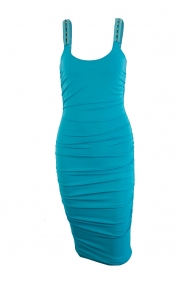 |
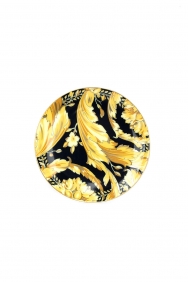 |
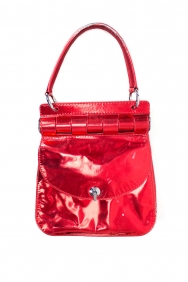 |
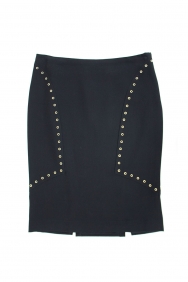 |
| Gianni Versace | Versace | Versace | Versace |
Tags:
- 1980s,
- 1990s,
- 80s,
- 90s,
- bondage,
- Celebrities,
- cone bra,
- controversial,
- dior,
- Education,
- Fashion,
- fashion history,
- fashion icon,
- fashion icons,
- four weddings and a funeral,
- gender,
- Gender Norms,
- gianni versace,
- Givenchy,
- Hermès,
- history,
- icon,
- iconic,
- john galliano,
- john paul gaultier,
- jpg,
- kate moss,
- Looking at Legends,
- madonna,
- man skirt,
- models,
- Naomi Campbell,
- new romatic,
- princess diana,
- punk,
- rebellion,
- rebellious,
- retirement,
- Runway,
- sailor,
- satire,
- sex,
- sexuality,
- Style,
- supermodel,
- the fifth element,
- versace,
- Vivienne Westwood









